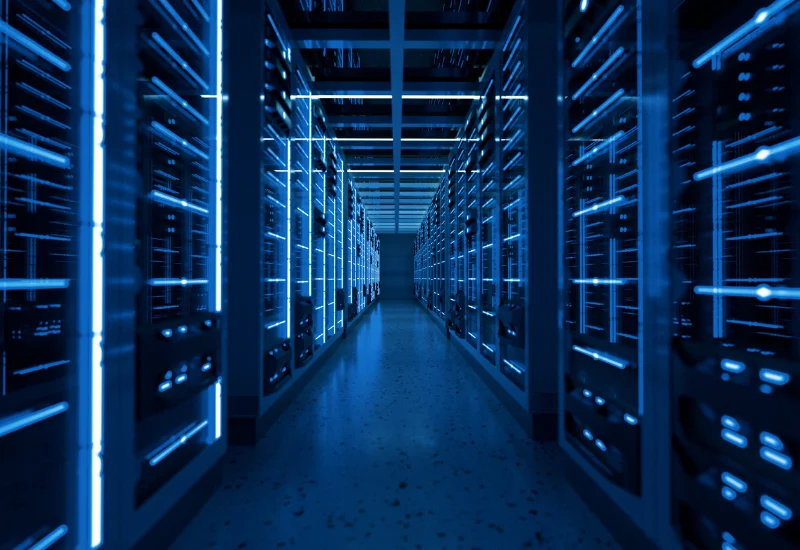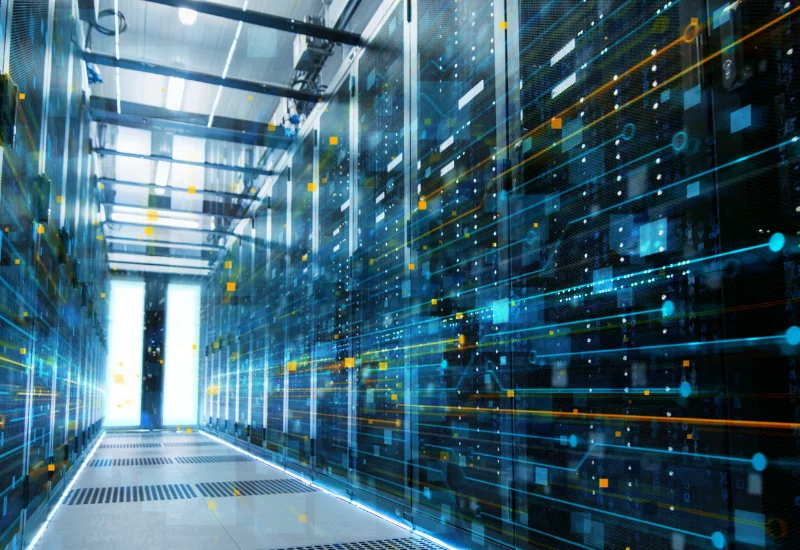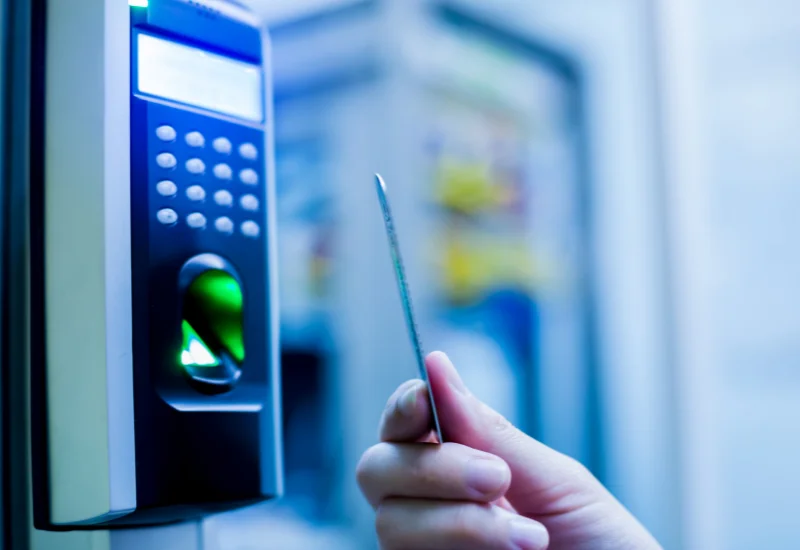
Jun 03, 2025
How can you improve data center security? Discover the roles security protocols, compliance, and risk mitigation. Our in-depth analysis provides insights into the latest strategies for securing data centers against evolving threats. Learn how to maximize security and operational efficiency in your data center.
Written by Jill - Written: December 23, 2023

In today’s digital-first world, the role of data centers is continuously growing. They are the backbone of our connected lives, supporting everything from everyday online tools to comprehensive remote work systems.
Central to the effectiveness and reliability of these data centers is robust security. Covering aspects from data protection to access control, the importance of data security has never been more vital.
This is precisely where digital visitor management systems come into play. An advanced system like Vizito goes beyond mere visitor registration, encompassing vital elements like GDPR compliance, a cornerstone in today’s privacy-focused world.
In this article, we will discuss:
If you are managing a data center, you know how crucial security is in today’s digital landscape. Continue reading to discover how to turn your data center into a fortress of security.
Data centers are the epicenters of data storage and management for businesses and organizations. They are often used for keeping sensitive information, including government, healthcare and finance data. This makes them prime targets for malicious activities.
A secure data center is a controlled space, where sensitive data can be stored and processed in a safe manner. Data security measures are essential to prevent unauthorized access to critical infrastructure, such as servers, storage devices, and networking systems.
The key elements of data center security are:
Data centers are sensitive for a wide array of threats, including:
The Uptime Institute’s classification into tiers 1 through 4 is crucial for understanding data center security and reliability.
As tier levels increase, data centers become more equipped to handle diverse challenges, minimizing service interruptions and data loss, which are critical aspects of data security. Organizations with strict availability requirements and a long-term (cloud) strategy typically opt for Tier 3 data centers. Alternatively, they may distribute their ICT infrastructure across two Tier 3 data centers for enhanced availability at a lower cost than a single Tier 4 center.

In an era where security threats are constantly evolving, adopting rigorous security precautions in data centers is not just a recommendation, but a necessity. The following tips and strategies are designed to enhance the overall security of data centers, safeguarding sensitive information against a wide array of threats.
Physical security measures in data centers are essential for protecting the facility against unauthorized access and physical threats. Examples include:
Effective access control ensures that only authorized individuals can enter the data center or its sensitive areas. These measures include:
Network security is crucial for protecting the data center’s digital infrastructure from cyber threats. Effective measures include:
Visitor management plays a crucial role in safeguarding data centers. Digital systems like Vizito offer a range of benefits and features that significantly enhance security protocols:
In high-security data centers, particularly those handling sensitive data, stringent visitor identification is key. Each visitor’s identity must be verified with the utmost precision before they are granted access to your building. This is where a digital visitor management system becomes invaluable.
The system can integrate with advanced identification methods, such as biometric scans, along with traditional ID checks. Biometric verification, like fingerprint scanning, adds an extra layer of security, effectively preventing identity fraud and ensuring that only authorized personnel can access critical areas.
A VMS offers a digital check-in process that is both efficient and secure. Beyond streamlining the entry process, the system manages and monitors who is entering and exiting the data center, ensuring only authorized personnel have access to sensitive areas.
Vizito goes a step further by enabling area-specific access permissions. This advanced feature allows each visitor to be assigned a specific visitor type based on the purpose of their visit. For instance, a maintenance worker may have access to technical areas but not to server rooms, whereas an IT auditor might have broader access privileges. By tailoring access in this manner, Vizito significantly reduces the risk of unauthorized access to critical and sensitive zones within your data center. Such controlled access is essential not just for security but also for maintaining operational integrity and compliance with industry regulations.

A cloud-based visitor management system keeps comprehensive records of visitor activity. These detailed visitor logs are invaluable for security audits and regulatory compliance. These logs provide a clear, time-stamped record of every individual’s movements within the facility, crucial for tracing activities in the event of a security breach.
When the system sends instant alerts upon a visitor’s arrival, it not only reduces the time they remain unattended, but also enhances overall security vigilance. This feature ensures that relevant personnel are immediately aware of visitor movements, allowing for quick responses to any potential security concerns.
A modern visitor management system helps you to quickly respond to and manage security incidents involving visitors. Its advanced features are designed to tackle potential security breaches effectively and efficiently.
In the event of a security incident, such as an unauthorized access attempt, Vizito’s system ensures an immediate and informed response. It promptly alerts the security teams, equipping them with critical details about the incident, including the identity of the individuals involved and their precise location within the data center.
A visitor management system monitors visitor locations within the facility, providing an extra layer of security and information in case of an emergency.
In case of an emergency, the ability to quickly ascertain the whereabouts of each visitor enables prompt and effective evacuation or targeted response strategies. This ensures that every individual in the facility is accounted for and managed safely.
A slick visitor management system like Vizito helps in adhering to industry standards and legal requirements, such as GDPR, by maintaining detailed visitor records and storing them in a safe manner. Besides GDPR, Vizito also helps data centers adhere to other regulations like HIPAA (for healthcare data) and ISO standards.
One of the key strengths of a good visitor management system is its ability to integrate seamlessly with existing CCTV and alarm systems within data centers. This integration means that visitor management becomes a part of the broader security ecosystem, enhancing the overall effectiveness of security measures and ensuring a unified approach to safeguarding sensitive data and infrastructure.
By implementing Vizito, data centers can significantly enhance their security posture. Our comprehensive visitor management system is well-equipped to manage and monitor visitor access, comply with regulatory requirements, and respond effectively to security incidents. Discover the benefits of Vizito firsthand with a 14-day free trial to see how it can transform your data center’s security approach.
Implementing Vizito in your data center can streamline visitor management processes, enhance security, and ensure compliance with regulations. Here’s a step-by-step guide to effectively integrate Vizito into your data center operations.
Start by assessing your current visitor management processes and identify areas where Vizito can offer improvements.
Install the Vizito software and hardware. This involves setting up kiosks or tablets at entry points and configuring the system to your specific requirements, including identity verification, visitor tracking, and automated notifications. Setting up is quick and easy. For a quick guide, you can check out this article on getting started with a VMS in less than 30 minutes.
You can seamlessly integrate Vizito with your existing security systems, such as access control and surveillance cameras, for a unified security approach.
Offer practical, hands-on training sessions for your staff to familiarize them with the new system. Ensure they understand how to operate Vizito and how it integrates with your existing security measures.
Go live with Vizito and monitor its performance. Gather feedback from staff and visitors to make any necessary adjustments. Keep your team updated on any new features or changes in the system.
Throughout our exploration of data center security, we’ve highlighted the critical role of comprehensive measures, from robust physical barriers to advanced network defenses. At the heart of elevating these security layers is the implementation of an effective visitor management system. Vizito offers enhanced identity verification, detailed visitor logs, automated alerts, and efficient tracking, all while seamlessly integrating with existing security frameworks. These features not only streamline visitor management but also fortify the overall security and operational efficiency of data centers.
Discover the transformative impact of Vizito on your data center’s security. Are you ready to embrace the change? Start with a 14-day free trial of Vizito and witness firsthand how it elevates your organization’s security.